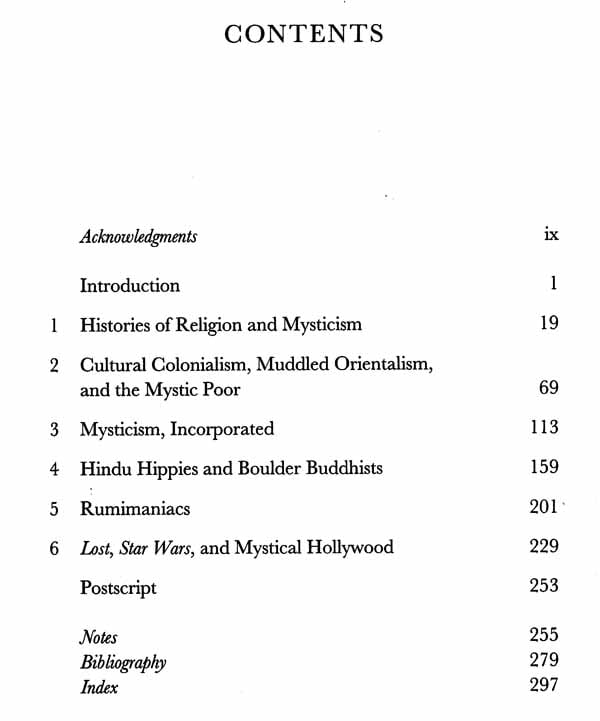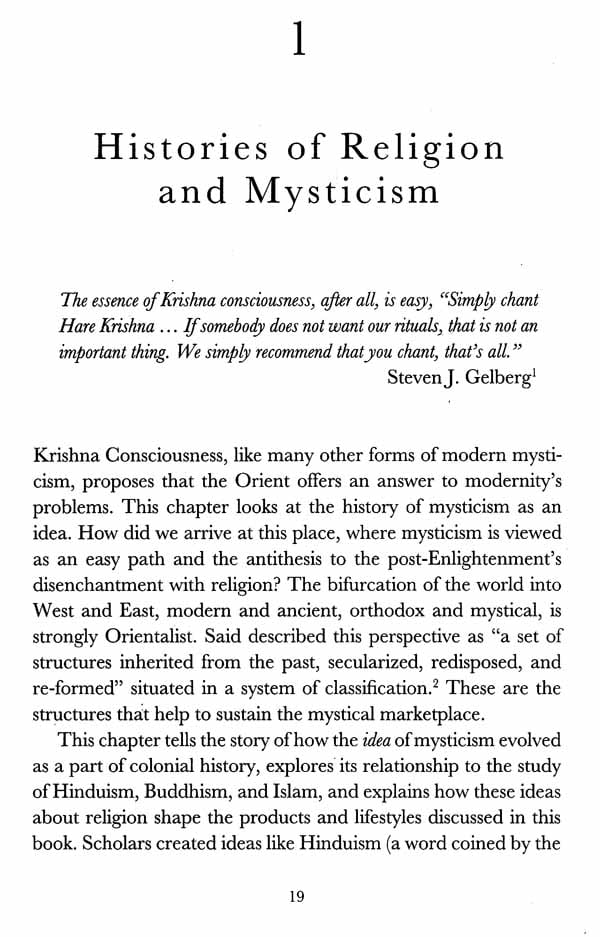
Buying Buddha, Selling Rumi- Orientalism and The Mystical Marketplace
Book Specification
| Item Code: | NAX384 |
| Author: | Sophia Rose Arjana |
| Publisher: | Oneworld Academic Ltd |
| Language: | English |
| Edition: | 306 |
| ISBN: | 9781786079725 |
| Pages: | 306 |
| Cover: | PAPERBACK |
| Other Details | 8.00 X 5.00 inch |
| Weight | 230 gm |
Book Description
From jewellery to meditation pillows to tourist retreats, religious traditions - especially those of the East - are being commodified as never before. Imitated and rebranded as ‘New Age' or ‘spiritual', they are marketed to secular Westerners as an answer to suffering in the modern world, the ‘mystical' and ‘exotic' East promising a path to enlightenment and inner peace.
In Buying Buddha, Selling Rumi, Sophia Rose Arjana examines the appropriation and sale of Buddhism, Hinduism and Islam in the West today, the role of mysticism and Orientalism in the religious marketplace, and how the commodification of religion impacts people's lives.
Sophia Rose Arjana is Associate Professor in the Department of Philosophy and Religion at Western Kentucky University. Her previous books include Pilgrimage in Islam, also published by Oneworld, and Muslims in the Western Imagination, which was a CHOICE Outstanding Academic Title of the Year. She lives in Bowling Green, Kentucky.
The search for enchantment in the modern world rarely entails the decades-long religious labor of the early Christian desert fathers or the Buddha's lifetime struggle to achieve enlightenment. More commonly, modern mysticism is characterized by a kind of dilettantism, a lifestyle that consists of a CD of Deepak Chopra meditations on Rumi, a subscription to Oprah's magazine, and a yoga retreat in Bali. As we shall learn, Orientalism often plays a powerful role in these products and practices, seen in everything from Buddhist sex toys to the mystical tourism found in Thailand, Indonesia, and Morocco.
This book examines mysticism from several vantage points: historically, as a concept invented in Western academia; theoretically, in its function as an arm of capitalism; critically, through its identification with Orientalism and other colonial projects; and materially, through many of its products and practices. The first three chapters deal with these historical, theoretical, and critical issues. The last three chapters focus on the material culture of popular mysticism, its ties to Orientalism, and the ways it is expressed in popular television and film. Later, in this introduction, I will outline these chapters, but first I want to foreground my work by touching upon some of the forces that shape modern mysticism-capitalism, colonialism, and Orientalism.
COLONIZATION, CAPITALISM, AND MODERNITY
Mysticism and its entanglement with the Orient is men broadly in the consumer culture of North America and Europe. Popular code words like mysticism and spirituality, are used to sell products and experiences to the bliss chique, casual Sufi, imitation Hindu, and hipster Buddhist. Individuals can combine these traditions with others-like Kabbalah, African spirituality, and Native American mysticism-without ever being identified as part of a religious community. One of the appeals of Orientalized mysticism to spiritual seekers, which may include ex-Christians, self-declared secularists, and the Nones, the group who claim to be "spiritual, but not religious" (also called "metaphysicals"), is that it rejects religious hierarchies and the institutions that support them. This is modern mysticism.
The search for religious meaning in modernity often involves the colonization of other cultures. This is often unintentional and unconscious, where consumers browse a kind of mystical flea market in which the bright, shiny, and colorful objects stand out. The Orient is, for historical and aesthetic reasons we shall explore in the following chapters, a confused hodgepodge of images and cultures, symbols, and traditions. The phenomenon I call muddled Orientalism sustains a marketplace populated with mystical and spiritual products and experiences. Modern mysticism exists in a system of cultural exchange born of colonial encounters and transformed into entrepreneurism, dilettantism, and spiritual voyeurism through the creative force of Orientalism.
The twenty-first century is characterized by capitalism, globalism, and consumption, all affecting the ways in which individuals explore and experience religion. Scholarship on religion and consumption has often focused on individuals consuming products that are identified with a specific tradition. For instance, American Hindus produce a large number of religious goods and also are active consumers of religious items. As one scholar notes:
A vast array of objects and items carrying religious symbolism is associated with the everyday religious practices and rituals of Indian American Hindus, including sculpted and painted images of Hindu gods and goddesses, framed pictures, bells, incense sticks, deity-specific items, prayer altars, and more transient items like fresh fruits, flowers and leaves for making garlands and decorations.
Hindus, Christians, Muslims, and Buddhists have rich histories of material culture, but as we shall learn, modernity has expanded the market for these products beyond the individuals located in distinct religious communities. Scholars describe this expansive space the religious marketplace.
**Contents and Sample Pages**














